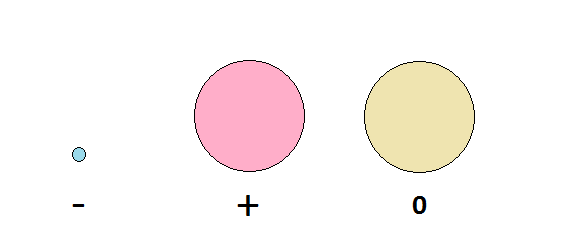When I first described Morton Spears' three fundamental quanta as balls with hooks, loops or a mix, I pointed out that hooks have a slight tendency to react with hooks, while loops do not react with loops under any circumstances.
I used this to explain the curious imbalance of the universe, in which we have free electrons but no free positrons. Positrons are always tied up in some relationship because they have hooks. Electrons can be free because they have hoops.
This also explains the existence of the positively charged mega-structure we know as the proton, and the complete absence of a similarly sized structure with negative charge.
The universe is populated with atoms that have the structure they have due to the slight difference in reactivity between hooks and hoops.
But the imbalance should not stop at regular matter. Now that we know that force is the product of loosely bound mega-structures in which particles collide to produce over-pressure and under-pressure, we must expect under-pressure to be slightly more predominant than over-pressure.
This is because under-pressure occurs when there is a reaction in the collision. Hooks and hoops latch on to each other, the two particles make a hard turn, they vacate the field, and we have under-pressure. When hoops meet hoops, we get the opposite. There is no reaction, the particles tend to stay in the field, and we have over-pressure.
But when hooks meet hooks, we get a tiny reaction. There is a tiny tendency for hooks on hooks collisions to take a turn. The difference between hooks on hooks collisions and hoops on hoops collisions is so small that it is undetectable in regular laboratory set-ups.
However, in extreme cases, the effect should be noticeable. Neutral particles communicating neutrality between two enormous masses should yield a tiny attracting force.
This tiny attracting force that we expect to find between such objects is most likely the force that we call gravity. Gravity is due to the exact same mechanism that causes the imbalance of matter in the universe. We have found a single mechanism to explain both gravity and the fact that protons are larger than electrons.

No comments:
Post a Comment